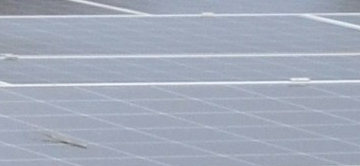The year 2022 will be remembered as one of great turmoil for electricity and gas supplies. Now that things have (partially) stabilized, we can take the time to analyze the facts and figures by consulting the report on "The functioning of the electricity and natural gas wholesale markets in 2022" published by the Commission de Régulation de l'Energie (CRE) in July 2023. We have extracted three items of information: wholesale price trends, compliance with the REMIT regulation, and technology marginality.
Wholesale electricity prices
As the attached graph shows, in 2022 the average weekly price of electricity MWh in France followed a very different trajectory to that of 2021 (with the exception of the last quarter of 2021, already affected by the first tensions on the natural gas market).

Prices in 2022 were higher: €276/MWh on average versus €95.5/MWh the previous year. There's been enough coverage in the media for it not to be news. Their irregularity throughout the year is more surprising, particularly the summer peak, with a high point of 611€/MWh on average during the week of August 22. This high value reflects both technical conditions over the summer and expectations of market balancing over the winter. Firstly, there was the low availability of the country's nuclear fleet, due to the discovery of stress corrosion affecting twelve reactors, which had to be thoroughly investigated. In addition, to avoid the risk of a winter power system failure, some nuclear and hydroelectric power plants, where inventories reached historically low levels in July 2022, have adopted "prudent management" of their capacity during the summer months, a period of low demand. This restriction of supply pushed up prices, leading to fears of a surge in winter. But thanks to a mild winter, production capacity was sufficient and prices did not reach the feared peaks. In an industry where the product is both indispensable and non-storable, caution, even if it proves excessive in retrospect, is preferable to short-sightedness, the consequences of which we saw in Texas in February 2021.
Integrity and transparency of the wholesale market
In France, the CRE is responsible for overseeing the wholesale energy markets under European regulation 1227/2011 (REMIT). The aim is to prevent market manipulation and insider trading, and to oblige market players to publish the privileged information they hold, in particular the availability of power plants. The convulsions in the electricity market caused by the scarcity of natural gas supplies could have given rise to a desire to abuse dominance. According to CRE, this has not happened, at least not more than in previous years. However, pages 9 and 16 of the monitoring report contain a surprising remark. To identify possible cases of market abuse, CRE relies not only on automated detection tools, but also on notifications of suspicions received from various sources, and in particular from persons organizing transactions on a professional basis (PPAT). And CRE is surprised to note that, despite a very turbulent 2022, it has not observed any particular increase in the number of alerts from PPATs. The report then states that "While this observation may be interpreted as reassuring, the low number of notifications has nevertheless led CRE to remind certain PPATs of their duty to monitor." The observation may be reassuring, but the insertion of this remark is not reassuring in terms of the reliability of the system.
Marginalized technologies
As electricity is a non-storable commodity, the cost of supplying an additional MWh is that borne by the technology that needs to be mobilized to produce this MWh instantaneously. This so-called "marginal" technology has a cost that is greater than or equal to the technologies already active in electricity production. Indeed, if it had a lower cost, this would mean that dispatching between the different production technologies had not been organized efficiently. The cost of the marginal technology signals the scarcity of electrical energy at a given moment. It is used as a price to remunerate all producers active at that moment. Identifying this marginal technology and measuring its cost is not easy (see pages 77-78 of the CRE report).
Because of the economic climate, 2022 is also atypical in this respect. For example, hydropower was marginal technology only 16.3% of the time in 2022, compared with 33.3% the previous year. Imports supplied the most expensive MWh most of the time, in 46% of the year's 8760 hours, and up to 70% in August. During periods of tension, Italy brought us the marginal MWh, whereas France is usually an exporter due to higher Italian prices. As for natural gas, the scapegoat of 2022, its production increased, but it was less often a source of marginal energy. Nuclear power also saw its marginality increase, particularly at the end of the year thanks to the reopening of plants shut down during the summer.
*
* *
Due to the combination of drought, nuclear power plant maintenance and the war in Ukraine, 2022 is characterized by an unexpected price peak in the middle of summer. But thanks to our interconnections, we have avoided even higher price rises, or even blackouts. In the coming years, heatwaves are likely to recur. Because of the lack of water, but also because of the growing need for air-conditioning, the summer peak is likely to become the norm rather than the exception.





